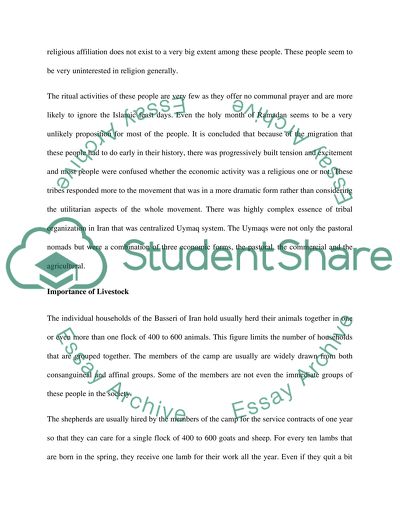Cite this document
(“The Basseri of Iran culture Research Paper Example | Topics and Well Written Essays - 2000 words”, n.d.)
Retrieved from https://studentshare.org/family-consumer-science/1421649-the-basseri-of-iran-culture
Retrieved from https://studentshare.org/family-consumer-science/1421649-the-basseri-of-iran-culture
(The Basseri of Iran Culture Research Paper Example | Topics and Well Written Essays - 2000 Words)
https://studentshare.org/family-consumer-science/1421649-the-basseri-of-iran-culture.
https://studentshare.org/family-consumer-science/1421649-the-basseri-of-iran-culture.
“The Basseri of Iran Culture Research Paper Example | Topics and Well Written Essays - 2000 Words”, n.d. https://studentshare.org/family-consumer-science/1421649-the-basseri-of-iran-culture.


